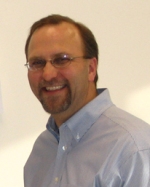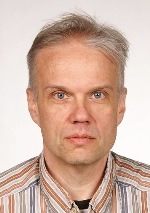CTIA Wireless 2012
(room opens at 11:45 am, Central Time)
Thursday, May 10th
12:00 pm – 2:00 pm
Room 342
 Extensive efforts are underway to standardize on a next generation platform for performance testing of wireless devices, taking into account LTE, A-GPS, uncertainty budgets and use of head/hand phantoms. This Forum provides an understanding of system performance and presents the core elements - such as the chamber, software and instrumentation - that facilitate systematic and repeatable measurements of MIMO devices. A panel discussion with the speakers from ETS-Lindgren, Agilent Technologies, Spirent, and Elektrobit concludes the Forum.
Extensive efforts are underway to standardize on a next generation platform for performance testing of wireless devices, taking into account LTE, A-GPS, uncertainty budgets and use of head/hand phantoms. This Forum provides an understanding of system performance and presents the core elements - such as the chamber, software and instrumentation - that facilitate systematic and repeatable measurements of MIMO devices. A panel discussion with the speakers from ETS-Lindgren, Agilent Technologies, Spirent, and Elektrobit concludes the Forum.
Organized by:


Register for FREE CTIA Panel here
Not attending CTIA 2012 in New Orleans?
Join the FREE Webcast instead, register at: MIMO Webcast
Program Details
The MIMO Expert Forum
Moderated by

Bryan Sayler,
Vice President and General Manager,
ETS-Lindgren
The MIMO Expert Forum
speakers include:
|
Moray Rumney |
Dr. Michael D. Foegelle |
|
|
Doug Reed |

Jukka-Pekka Nuutinen |
Sponsored by:




_______________________________________________________________
Bios
Moray Rumney joined Hewlett-Packard/Agilent Technologies in 1984, after completing a BSc in Electronics from Edinburgh’s Heriot-Watt University. Since then, Moray has enjoyed a varied career path, spanning manufacturing engineering, product development, applications engineering, and most recently technical marketing. His main focus has been the development and system design of base station emulators used in the development and testing of cellular phones. Moray joined ETSI in 1991 and 3GPP in 1999 where he was a significant contributor to the development of type approval tests for GSM and UMTS. He currently represents Agilent at RAN WG4, developing the air interface for HSPA+, LTE and LTE-Advanced. In his current role as Lead Technologist specializing in LTE, Moray has published many technical articles in the field of cellular communications, and was editor of Agilent’s book “LTE and the Evolution to 4G Wireless”. Moray is a regular presenter and chairman at industry conferences where he speaks on wireless technology issues and their implications on the wider industry.
_______________________________________________________________
Dr. Michael D. Foegelle is the Director of Technology Development at ETS-Lindgren in Cedar Park, TX. He received his Ph. D. in Physics from the University of Texas at Austin, where he performed theoretical and experimental research in both Condensed Matter Physics and Electromagnetic Compatibility (EMC). He performed contract EMC research with Dr. J. D. Gavenda of UT for IBM and RayProof where he helped to develop a semi-anechoic chamber modeling system. In 1994 he began working for EMCO in Austin Texas (now ETS-Lindgren). There he has been integral to the development of products, software, and test methods for Wireless, RF, and EMC testing. He has been involved in numerous national and international standards committees on EMC and wireless, including the ANSI ASC C63® working groups, the CTIA Certification Program Working Group on over-the-air performance testing of wireless devices, the IEEE 802.11 Task Group T for wireless performance prediction of 802.11 devices, the Wi-Fi Alliance Wi-Fi Mobile Convergence Group, the CTIA/Wi-Fi Alliance Converged Wireless Group, and the WiMAX Forum’s Radiated Performance Test working group. He is vice-chair of the CTIA’s MIMO Anechoic Chamber subgroup and co-chair of the CTIA’s Converged Devices ad-hoc group and has served as Vice-Chair of the Wi-Fi Alliance’s Wi-Fi/Mobile Convergence group. He was also the editor and principal contributor for the WiMAX Forum™ Radiated Performance Tests (RPT) for Subscriber and Mobile Stations test plan. He has authored or co-authored numerous papers in the areas of Electromagnetics, EMC, Wireless Performance Testing, and Condensed Matter Physics, holds several patents on wireless and electromagnetic test methods and equipment, and is dedicated to advancing the state of the art in radiated RF testing of emerging wireless technologies.
_______________________________________________________________
_______________________________________________________________
_______________________________________________________________
Moderator
_______________________________________________________________
Abstracts
_______________________________________________________________
Antenna Pattern Measurement: The Engineer’s Window into MIMO OTA Performance
By Moray Rumney, Lead Technologist, Agilent Technologies
The design of mobile phone antennas continues to get harder with shrinking device sizes, multi-band requirements and the introduction of MIMO. A key tool in analyzing antenna design is 3D pattern measurement carried out in a single probe anechoic chamber. This paper examines the latest developments in techniques for non-intrusive measurement of antenna patterns and how this information provides invaluable insight into device design beyond what can be achieved using simulation or end-to-end performance measurements. By examining the SINR of the pattern at high device transmit power and low received power, insight can be gained into UE self interference. This analysis performed in an anechoic chamber can then be used for testing MIMO OTA performance in arbitrarily complex 3D environments without further need of the anechoic chamber. This is achieved by convolving the measured antenna performance with a channel emulator connected to the device’s standard temporary antenna ports. As well as being a powerful design tool, this two-stage approach to MIMO OTA is a candidate methodology being studied by CTIA and 3GPP for the purposes of developing conformance test standards.
_______________________________________________________________
Product Performance Evaluations in MIMO Environment Simulators
By Dr. Michael D. Foegelle, Director of Technology Development, ETS-Lindgren
Plenty of information has been published on different potential methodologies for evaluating radiated performance of MIMO wireless devices. The results of the 3GPP round robin, originally designed to evaluate the reproducibility of a single method, were inconclusive for comparing different methodologies or providing an understanding of when those methodologies break down. A new effort is underway to shift the focus towards evaluating the relative performance of antenna systems specifically designed for “good”, “nominal”, and “bad” performance. In this way, the ability of a MIMO test system to provide a relative distinction between different levels of device performance may be assessed. This presentation will show results of this comparison for different system configurations and channel models and provide an indication of the suitability of these systems for evaluating MIMO device performance.
_______________________________________________________________
Measuring MIMO Device Performance using Realistic Over-the-Air Testing Methods
By Doug Reed, Solutions Architect, Spirent Communications
Cellular operators need a way to evaluate MIMO devices and ensure that performance meets expectations. Achieving good MIMO performance requires that design of the antennas is able to provide adequate MIMO gain in realistic channel conditions. Ensuring this requires a careful approach to testing. MIMO performance is a function of both the radio channel condition and the antenna design. Each device antenna will observe a different complex antenna response to received signals, leading to correlated fading and branch imbalances that impact MIMO capacity. Testing a MIMO device is therefore dependent on the careful selection of specific and realistic channel scenarios that will properly “challenge” the MIMO Device. The discussion will include a look at some antenna examples that are especially interesting in terms of both behavior with specific channel models and how MIMO capacity is impacted in each case. An anechoic chamber based OTA test method will be discussed. This discussion will specifically address the method’s unique ability to create dynamic channel environments and its use in evaluating unique device capabilities such as adaptive antennas. Measurement scenarios and evaluation using specific channels will also be described.
_______________________________________________________________
Novel Aspects of MIMO OTA Using an Anechoic Chamber
By Jukka-Pekka Nuutinen, Senior Specialist, Wireless Communications Tools, Elektrobit
This presentation reviews the essential components and technologies required to create an automated end-to-end MIMO OTA solution using an anechoic chamber. First, a review is provided of the requirements set by operators for 3GPP to initiate the work. Solutions that meet these requirements are reviewed along with the novel algorithms to optimize the performance vs. cost. A summary of the extendibility of the MIMO OTA to interference testing, full duplex testing (example from IEEE802.11ac standard) and dynamic modeling is presented. 3D modeling aspects are reviewed (i.e. why 3D channel models are important and how they are implemented to MIMO OTA using an anechoic chamber). The presentation concludes in exploring the main benefits of MIMO OTA testing, including how MIMO OTA using a spatial channel emulator and anechoic chamber is addressing the requirements set by operators for 3 GPP.



